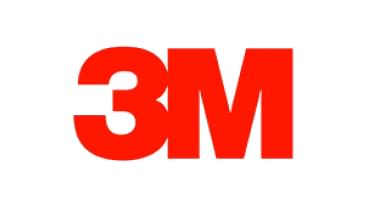Minnesota Mining & Manufacturing Company
The Minnesota Mining and Manufacturing Company, better known as 3M, made several asbestos-containing products, including adhesive and caulk. The company has faced a number of asbestos lawsuits and continues to settle them privately and fight them in court.

3M’s History with Asbestos
From the mid-1930s through the late 1980s, 3M manufactured a variety of asbestos-containing products. The products ranged from home repair materials to office supplies.
The company used asbestos fibers in its products to provide strength, durability and heat resistance. Unfortunately, 3M employees who manufactured these products were at high risk of exposure to asbestos, which is known to cause several cancers including lung cancer and mesothelioma.
Additionally, do-it-yourself homeowners and a variety of occupations were end users of 3M’s asbestos products.
While most other asbestos manufacturers have gone bankrupt fighting asbestos lawsuits in court, 3M remains financially stable continues to handle asbestos litigation through the court system.

Gain access to trust funds, grants and other forms of compensation for you or your loved ones.
Get Help NowAsbestos Litigation Involving 3M
The company has faced asbestos-related lawsuits for several decades, but recent suits involve a defective respirator that failed to protect workers from asbestos exposure.
- In December 2021, a court of appeals upheld a $4 million verdict awarded to the surviving family of Warren Wright, who died of mesothelioma following asbestos exposure in oil refineries. 3M was among the defendants, but chose to settle before trial. ExxonMobil proceeded to trial and was held responsible for the verdict.
- In June 2018, a Wisconsin court ruled there was enough evidence to continue a consolidated lawsuit from two mesothelioma plaintiffs claiming 3M’s respirators failed to protect them from asbestos exposure. The plaintiffs worked at a factory in Weyerhaeuser, Wisconsin, which manufactured fireproof doors containing an asbestos core. Workers were required to wear 3M respirators while working around the asbestos cores, but the plaintiffs claim these devices were defective and led to their development of mesothelioma.
- In February 2016, 3M settled four asbestos lawsuits filed by mesothelioma plaintiffs the day before the trial was set to begin. The consolidated suits were brought by former workers of the same Weyerhaeuser factory that manufactured fireproof doors with asbestos.
- In 2015, 3M was named in a lawsuit filed by a mesothelioma plaintiff who claims he was exposed to asbestos through 3M products during his time in the U.S. Air Force.
3M’s Asbestos Products & Workers at Risk
3M manufactured multiple products that contained asbestos including:
- 3M Adhesive
- 3M Wet Adhesives
- 3M Caulk
- 3M Centerlite
- 3M Greenlite Powder
- 3M Hot Melt Sunset Resin
- 3M Solid Pavement Material
- 3M Sticky Tar Caulking
- 3M Cement
- 3M Sealers
- 3M Dust Masks
- 3M Heat Protective Rolls
- 3M Rubber Coated Asbestos Cloth
- 3M Sandpaper
- 3M Heating Elements
- 3M Laminated Sheets
- 3M Pen and Pencil Holder
- Irvington Arc Proofing Tapes & Blankets
The 3M products that contained asbestos endangered 3M employees in addition to end users of the products. The workers who made these products or worked with them throughout their career are at an increased risk of developing asbestos-related diseases such as mesothelioma.
Some of the occupations at risk of working with 3M’s asbestos products include:
- Mechanics
- Engineers
- Electricians
- Carpenters
- Painters
- Plumbers
- Construction workers
- Maintenance workers
- Factory workers
- Office workers
Regarding end users of asbestos products, a 2018 study in the International Journal of Epidemiology looked at asbestos-related cancer risks for British workers in different industries. Former plumbers, electricians and painters made up one of the highest risk categories, with a risk of mesothelioma almost 16 times higher than in the general population.
3M’s History
Minnesota Mining & Manufacturing Company was founded in 1902 as a mining company and grew significantly from its humble beginnings to manufacture thousands of consumer products.
The company’s founders initially sold sandpaper made from imported Spanish garnet.
In 1916, 3M purchased its first laboratory and quickly began inventing new products.
Among the company’s early inventions were waterproof sandpaper, masking tape, cellophane “Scotch” tape and sound-deadening materials for automobiles. Scotch tape remains 3M’s most iconic product.
3M experienced tremendous growth after World War II, opening many plants across the country. Around 1950, the company went global, opening facilities in Canada, Mexico, France, Germany, Australia and the United Kingdom. By 1951, international sales had reached $20 million.
Over the next several decades, the company developed many unique products such as the world’s first synthetic grass surface. One of its best known products, Post-It Notes, appeared in 1980. Today, 3M sells more than 60,000 products.
Headquartered in St. Paul, Minnesota, the company has more than 93,000 employees in 70 countries. In addition, 3M products can be purchased in more than 200 countries worldwide.
The company has been listed on the Fortune 500 list for more than 65 years. Global sales total about $30 billion annually with international sales accounting for more than 60% of all sales.
Recommended Reading


